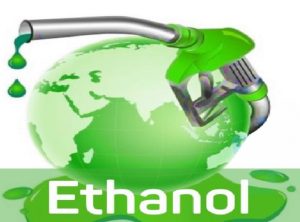India has announced plans for 27% ethanol blending in petrol (E27) by 2030:

India has announced plans for 27% ethanol blending in petrol (E27) by 2030, extending its successful Ethanol Blended Petrol (EBP) programme.
- Ethanol, an alcohol derived mainly from sugarcane, maize, and surplus foodgrains, is blended with petrol to create a cleaner, renewable transport fuel.
- The Ethanol Blended Petrol (EBP) Programme was launched in 2003, beginning with 5% blending.
- Objectives:
- Reduce India’s dependence on imported crude oil.
- Conserve foreign exchange reserves.
- Lower vehicular emissions to support environmental commitments.
- Provide farmers with assured markets for crops, stabilising incomes.
- Encourage second-generation ethanol from crop residues, reducing stubble burning.
- Benefits of Ethanol Blending
- Energy Security – India imports nearly 88% of its crude oil, making the economy highly vulnerable to global price shocks. Ethanol blending substitutes imported crude, thereby reducing dependence on foreign oil.
- Environmental Gains – Ethanol blends cut carbon monoxide and hydrocarbon emissions, contributing to India’s Net Zero 2070 pledge and reducing urban air pollution.
- Farmer Welfare – Farmers benefit from steady demand for sugarcane and maize; over ₹1.2 lakh crore has flowed to them in the past decade through ethanol procurement.
- Rural Development – Distilleries in rural areas create jobs, promote agro-based industries, and reduce distress migration.
- Circular Economy Link – Initiatives like PM-JI-VAN Yojana promote second-generation ethanol from crop residues, turning waste into energy while tackling stubble burning.




